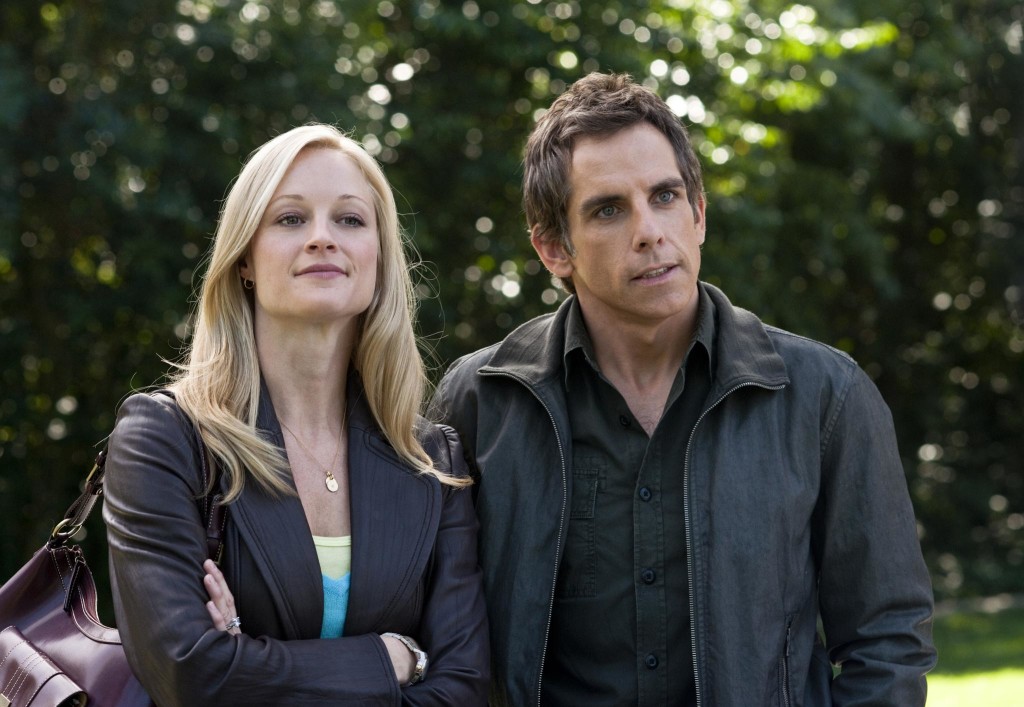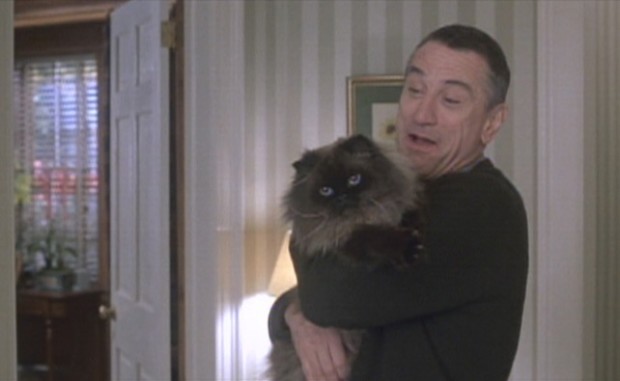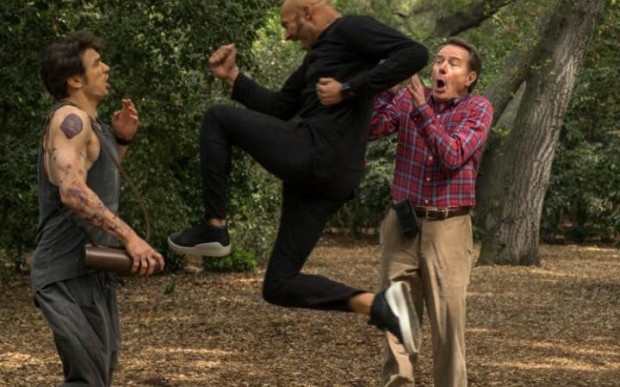If you’re anything like me, you need the occasional break from the Hollywood tentpoles, the Oscar hopefuls, the thrillers and the chillers, the biopic caterpillars. Ya just want to laugh sometimes, man! So ya go over to the comedy section of your digital rental service and try to find something that either looks good or has an actor in it you like. Then you press the magical download button and hope for the best.
While going through this process last week, I came across a comedy called “Why Him.” You may have heard of it. It’s a movie that stars Breaking Bad vet Brian Cranston along with James Franco. In it, a father flies with his family to California to meet the man who wants to marry his daughter.
Now, when I originally saw this trailer, I said, “That movie isn’t going to work.” And I knew exactly why it wasn’t going to work. But three months later when the bar is lower and the picks are slimmer, you start movie gambling. I looked up the writer and director of the film and was surprised to see that it was written by the same writer of one of my all-time favorite comedies, “Meet the Parents.”
So I thought, “Huh. I have to give this a shot now.” And I gave it a shot. And it turned out to not only be bad, but embarrassing. However, I already knew this would be the case when I originally saw the trailer. And chances are, so did you. Which is why you didn’t waste your hard-earned money like I stupidly did.
But why, specifically, was this movie doomed before it was written?
It was doomed because it had a faulty concept.
I’m going to get technical here, so stay with me. But the reason the concept was faulty was because it didn’t have clarity of conflict.
Clarity of conflict – When the conflict at the center of the movie’s concept isn’t clear to the viewer.
That may sound like screenwriting mumbo-jumbo, but it’s imperative that every movie you write have clarity of conflict. If you don’t get this one thing down, your movie is doomed. And I’m going to show you why.
But first, I need to teach you what conceptual conflict is. When you come up with an idea, you must also come up with the main conflict within that idea. Let’s say I pitched you a movie. “It’s about a funny irreverent superhero who’s this crazy dude and he says all these crazy things when he’s doing stuff. It’s insane.” You’d (hopefully) look at me and say, “Annnnd?” The reason you’d say that is because I never told you what the central conflict was in the movie.
Had I instead said, “It’s about a funny irreverent superhero who vows revenge on the super villain who tortured and maimed him for a decade,” you’d better understand the movie because I gave you the central source of conflict. Without a central source of conflict, a movie isn’t a movie. It’s an idea.
The next step is making sure that this conflict is clear. If the audience isn’t clear on what the conflict is or how it works, it’s like being thrown into a sport where you don’t know the rules. You have no idea where to stand. You have no idea where you’re going or why you’re going there. You’re not even sure what the point of the game is (I imagine this is what it’s like to play Cricket).
The reason Meet the Parents is one of the most popular comedies of all time is that it has one of the clearest conflicts of any comedy ever. A young man must win over the tough-as-nails father of the girl he wants to marry. You understand what’s going on INSTANTLY. You could explain that concept to anyone walking down the street and within five seconds they’d get it.
That’s because the clarity of conflict is so strong.
I understand the “Why Him” pitch in theory. I could see it going down in a boardroom like this: “What if we did Meet the Parents… but in reverse? So it’s actually the father who goes to meet the potential son-in-law.” Okay, on the surface, it’s not terrible. Every father’s nightmare is their daughter marrying a deadbeat loser. There might be a movie here.
BUT THAT’S NOT THE MOVIE THEY MADE.
Here’s what they did instead. They made the daughter, Stephanie, fall in love with a guy who was a bit of a douche, but WORTH 100 MILLION DOLLARS.
Why is this a problem? It’s a problem because now, it’s not clear what we’re supposed to think. I’d understand being upset if Stephanie was going to marry some drug-dealing deadbeat living in his mother’s basement. But she’s marrying a man who’s incredibly rich and successful who she’s head-over-heels for. As an audience member, I’m thinking, “Wait, why is that a bad thing?”
Due to our confusion, we figure there must be something wrong with Laird. He must be a bad guy. But it turns out he’s a really good guy, further muddying the conflict waters. The movie poster is telling me I’m not supposed to like this boyfriend, but my logical mind is saying he’s fine. In fact, this is probably the ideal guy you’d want your daughter to marry.
Now you might be saying, “Okay, Carson. You’ve proven they did some nerdy inside baseball screenwriting thing wrong. Who cares?” YOU SHOULD CARE. Because the conflict at the heart of your concept dictates EVERYTHING that comes after it. Every scene between Laird and the dad will carry an undercurrent of, “Wait, what am I supposed to be feeling right now?” because what the movie is telling me I’m supposed to be thinking isn’t matching up with what I’m actually seeing! And if that’s what I’m concentrating on, I’m not laughing.
If you watch the original Meet the Parents, you’ll see that every joke is built off of that central conflict. When Greg loses the cat, it’s not some goofy, “Zoinks! I lost the cat!” scene played for zoinksy cat laughs. That cat is Jack (the father’s) most prized possession in the entire world. If Greg doesn’t find that cat before Jack comes back – a man who already hates him – he’s fucked! He loses the woman he wants to marry!
In Why Him, since jokes centering around the central conflict don’t work, the writers start bringing in jokes that have nothing to do with the concept. For example, a character is brought in who’s half-butler, half-ninja, whose job it is to… well, let’s be honest. He’s there to act wacky and do a lot of off-the-wall shit because the producers realized nothing else about the comedy was working.
This is why clarity of conflict is so important, guys. Everything else falls apart if we don’t understand what the central conflict in the story is.
In Arrival, the central source of conflict is communication.
In The Martian, the central source of conflict is long-term survival.
In The Revenant, the central source of conflict is revenge.
In Trainwreck, the central source of conflict is the main character sabotaging herself.
In Flight, the central source of conflict is addiction.
There will be lots of little minor conflicts along the journey in every movie. And the more complex your movie is, the more of those you’ll have. But you must have a dominant central conflict driving your story and it must be CLEAR. For example, Braveheart is a really complex movie that covers a lot of time, involves multiple women our hero falls in love with, contains a lot of political maneuvering, as well as lots of battles. But the central conflict is the English. That’s what the movie always keeps coming back to – securing freedom from the English.
So I beg of you, please, get your central conflict in order. Make sure it’s clear. When you have that clarity, that’s when someone hearing your pitch or seeing your trailer just “gets it.” They immediately understand what the movie is about. Hopefully this brings your concepts to life. Good luck!





